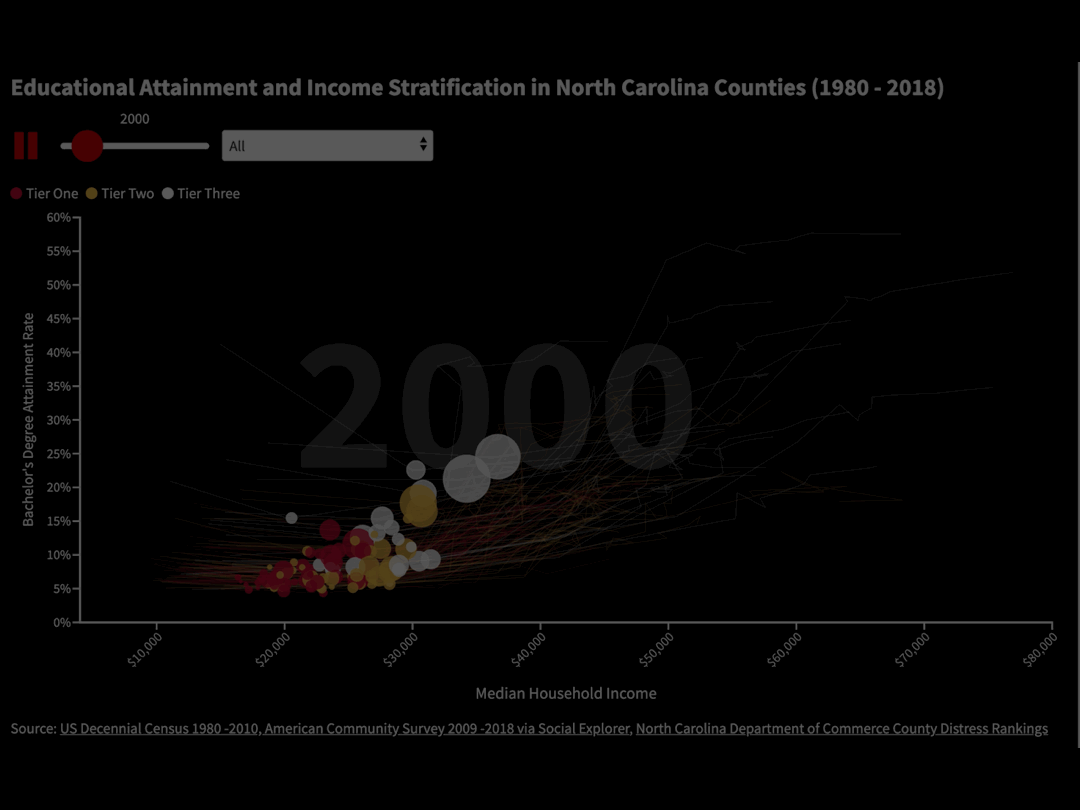Black voter turnout in NC (we've got a problem)

“The vote is the most powerful instrument ever devised by human beings for breaking down injustice and destroying the terrible walls which imprison people because they are different from others”
- Rev. Dr. Martin Luther King, Jr.
These words haunt me today. As we honor the legacy of Rev. Dr. Martin Luther King, Jr., it is apparent that young Black voters throughout North Carolina do not hold this to be true. They are not to blame for the apparent disaffection for civic engagement because many in my circle do not see an appreciable improvement in their lives, no matter how much they vote. In the last decade, leaders in the General Assembly have aggressively gerrymandered both congressional and state legislative districts, diluting the power of the Black voter to choose representation that will deliver for their community. They concurrently crafted race-based voter ID laws that intentionally complicated the process of casting a ballot. These barriers, coupled with ineffectual progressive messaging and lack of policy victories, leave many young voters of color wondering if voting will actually change their lives for the better. This is something we social justice advocates have to figure out. Because as it stands, the next generation of Black voters, the traditional backbone of the progressive movement in North Carolina, is sitting on the sideline, trying to figure it all out. I’m not laying blame; I’m just here to highlight the trend.
Let’s take a look at how this has played out since 2012.
We observe above that during the 2012 presidential election between Barack Obama and Mitt Romney, Black youth voter (18 - 25) turnout in North Carolina stood around 61 percent statewide before plummeting to 48 percent in 2016 (Clinton v. Trump) and creeping up to 49 percent in 2020 (Biden v. Trump). One could surmise that the residual enthusiasm surrounding the first African American president, while having ebbed since 2008, still represented a high water mark in African American turnout amongst young voters. The 26 - 40 cohort follows a similar trend, with turnout eroding from 63 percent in 2012 to 49 percent in 2020. Black voters aged 41 to 65+ saw their turnout increase over the next two cycles, moving from 76 percent in 2012 to 78 percent and 82 percent in 2020, respectively.
By taking the county-level age cohort-specific voter turnout percentages for 2020 and subtracting them from 2012’s turnout, we are able to determine the percent change over the past two election cycles. While overall, Black voter turnout in North Carolina has only decreased 2 percent over the past two cycles, there is a pronounced decline among the 18 -25 cohort. Most striking in rural NC is Hertford County, which has seen youth voter turnout drop 27 percent since 2012. One must account for migratory trends in North Carolina, which has seen many young African Americans leave the rural part of the state and settle in suburban and urban counties. Still, migratory hotspots like Wake, Mecklenburg, Buncombe, and Guilford counties all report declines in youth turnout over the past two cycles.
Turnout trends for the 26 - 40 age cohort of Black voters in North Carolina, in many ways, is the most troubling. Poised to become the core of North Carolina’s Black electorate in a couple of years, this group appears to be much less engaged than in cycles before. Counties along Virginia’s southeastern border reveal an uptick in Black registered voters casting ballots. However, counties along the I-74 corridor, particularly Robeson County, are experiencing a broad drop off in turnout. Electorally speaking, this makes it difficult for any progressive candidate to win in the 9th Congressional district, recently viewed as competitive with the right candidate and turnout.
As the Black electorate ages, we see turnout increase compared to the younger cohorts. With the 41 - 65 cohort, most counties either see a slight to moderate increase in turnout. Cumberland, Hoke, and Harnett represent a cluster of counties where Black registered voters gained ground from 2012. Robeson County remains the county where turnout seems to be a consistent challenge for Black voters.
The 65+ cohort in North Carolina has seen turnout increases in every county (with more than 5 percent African American population) in both the 2016 and 2020 cycles. Without this group, African American turnout would likely be catastrophically low.
In an effort to find some meaning as to the varied outcomes in turnout amongst Black registered voters, I wondered if there was indeed a relationship between a quality of life measure and young Black voter turnout. Above is a plot graph that cycles from 2012, 2016, and 2020 and measures median household income along the X-axis and 18 - 25 Black turnout along the Y-axis. There appears to be a positive linear relationship between turnout and median household income, suggesting that maybe in places where household wealth is more prevalent, there might exist some impetus for engaging in the voting process. I am not affirming that relationship exists as I have not run the model to verify this, but there seems to be a steady increase at first glance.
I have no clue what this means for Black voter and civic engagement. However, I know that the Black electorate is not a monolith and the reasons driving these turnout trends are as varied as the colors worn at an HBCU homecoming in the fall.
I also know that in order for a policy agenda to exist that will benefit all North Carolinians, particularly African Americans, the NC General Assembly's composition has to change. In order for that to happen, turnout amongst all cohort age groups has to increase.
How we do that is the question.




